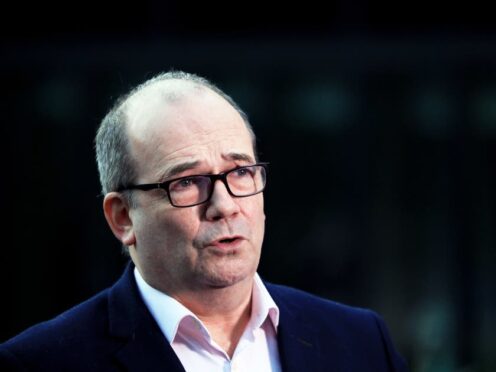A three-year political impasse and ongoing budget uncertainty left the health system in Northern Ireland less well equipped to deal with a pandemic than it had been a decade earlier, the region’s chief medical officer (CMO) has said.
Professor Sir Michael McBride told the Covid-19 Inquiry that services were existing on a “hand-to-mouth” basis in the years leading up to the outbreak of the coronavirus pandemic at the outset of 2020.
Giving evidence in Belfast to the inquiry module assessing Northern Ireland’s handling of the Covid emergency, Dr McBride was asked to assess the impact of the three-year powersharing vacuum at Stormont, which only ended weeks before the onset of the pandemic when elected ministers returned after a political deal restored the devolved institutions.
“I think that it is absolutely preferable to have a government in Northern Ireland, to have ministers in place,” he told inquiry chair Baroness Hallett.
“I think we were fortunate during the pandemic that we did have ministers in place and a government in place.”
He added: “I think that that period between 2017 for three years until three weeks before the pandemic started was a difficult period certainly from a departmental perspective, and from my role as chief medical officer – we were not able to advance significant policy decisions or take forward legislation underpinning those policy decisions. That was problematic.”
Dr McBride said by 2020 the health system was “long overdue” for structural change and reform. But he said implementation of such measures stalled between 2017 and 2020 as there were no ministers in place to sanction them.
“Major restructuring requires ministers to agree to those major changes, and we didn’t have ministers to agree to those major changes,” he said.
“We could not make decisions about the end point and final decisions around what that new structure would look like and how those services would be redesigned.”
He said that was only one half of the problem facing the health system. The CMO said the other issue was the financial uncertainty created by operating on a “hand-to-mouth existence” on one-year budget cycles, rather than having longer-term spending plans.
“We had that, if I may say, a double hit of not being able to implement the change and actually not having budgetary certainly either,” he added.
“Which meant that many decisions were short-term decisions, as opposed to longer-term strategic decisions, which only ministers can make.”
Dr McBride said the result of these issues meant the system was less well prepared to deal with the pandemic than it had been in 2009, when there was the outbreak of the H1N1 virus.
“We headed into this pandemic with a less resilient health and social care system, budgetary uncertainty, significant workforce challenges and vacancies, (and) a system that was long overdue for change,” he said.
“My assessment would be that we were not in as good a place as we were in 2009.”
